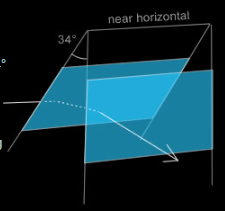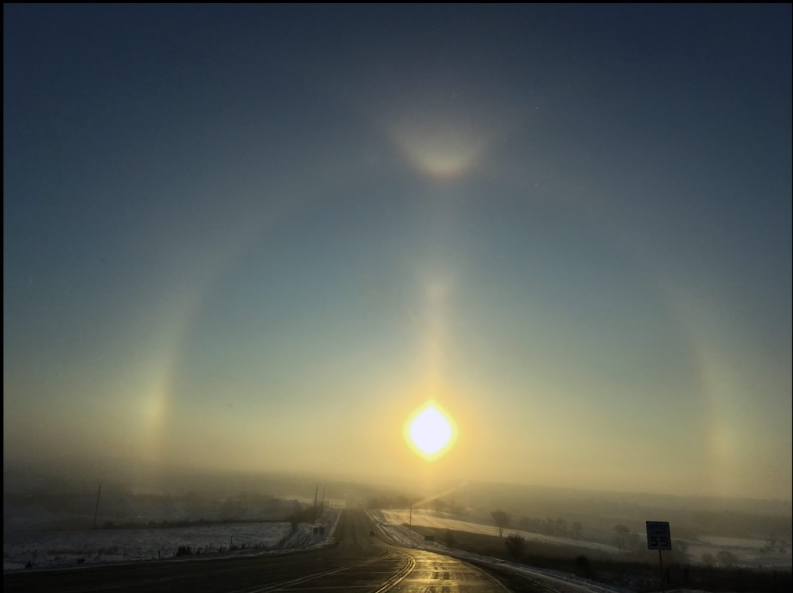Moilanen Arcs & Ski Resorts - OPOD
Moilanen Arcs & Ski Resorts - A Rare Atmospheric Phenomenon
Have you ever witnessed a breathtaking display of halos in the sky while skiing? If so, you may have been fortunate enough to observe the rare Moilanen arc, named after its discoverer Jarmo Moilanen from Finland. This unique V-shaped halo, positioned directly above the sun, has been recently observed near ski resorts during periods of low-level diamond dust. In this article, we will delve into the fascinating connection between Moilanen arcs and ski resorts, exploring the factors that contribute to their occurrence and the scientific mysteries that surround them.
The Enigmatic Moilanen Arc and Other Halos
The Moilanen arc is characterized by its distinct V shape, which can be seen above the sun. It often appears in conjunction with the more common upper tangent arc, which forms a bright 'V' touching the 22° halo. Additionally, faint sundogs can be observed on a parhelic circle that passes horizontally through the low sun. These mesmerizing atmospheric phenomena create a spectacle of light and color, captivating those lucky enough to witness them.
The Association Between Moilanen Arcs and Ski Resorts
Interestingly, there has been a notable correlation between Moilanen arc sightings and ski resorts. In recent weeks, numerous sightings of the Moilanen arc have occurred in close proximity to ski slopes, specifically during episodes of diamond dust formation. For instance, photographer Heather Kluesner captured a stunning image of a diamond dust halo display near Elizabeth, Illinois, USA, just 16-19 km away from a ski resort. This association raises questions about the potential influence of snow-making operations on the occurrence of Moilanen arcs.
The Role of Snow-Making Guns in Moilanen Arc Sightings
To shed light on this intriguing connection, we turned to halo expert Marko Riikonen for insight. Riikonen explained that while he is aware of Moilanen arc sightings in diamond dust caused by sea winds, the presence of settlements or smoke from houses cannot be ruled out as potential contributors. However, the proximity of ski resort snow-making guns to the observed Moilanen arcs suggests that their operation plays a significant role. These guns emit small active proteins that act as nuclei for snowflake formation. The resulting ice crystals can travel considerable distances, potentially up to 10 km or even 50 km, under favorable conditions.
The Formation of Moilanen Arcs and Halo Displays
The exact mechanism behind the formation of Moilanen arcs remains a subject of scientific inquiry. We know that this rare halo is generated by rays refracted through two ice facets inclined at an angle of 34° to each other. The intersection of these two facet planes is horizontal, giving rise to the characteristic V shape. However, despite extensive crystal sampling and dedicated efforts by observers, the specific ice crystals responsible for Moilanen arcs have yet to be identified conclusively.
The Diversity of Halo Displays at Ski Resorts
While Moilanen arcs may be the most elusive and captivating halo phenomenon observed near ski resorts, they are not the only ones. The presence of snow-making operations can contribute to the formation of various other rare halos, creating a visual feast for those who appreciate atmospheric optics. The active proteins emitted by snow-making guns can facilitate the development of smaller, high-quality plate and column crystals, which in turn give rise to exceptional halo displays. Ski resorts, therefore, offer a unique opportunity to witness a diverse range of halos and atmospheric wonders.
Unlocking the Mysteries of Moilanen Arcs
Despite our growing understanding of atmospheric optics, many questions remain unanswered regarding Moilanen arcs and their association with ski resorts. Scientists and observers continue to study these rare phenomena in hopes of unraveling the secrets of their formation. Through diligent research and collaboration, we inch closer to identifying the specific ice crystals responsible for Moilanen arcs and gaining a deeper understanding of their connection to ski resort environments.
In conclusion, Moilanen arcs are a remarkable atmospheric phenomenon that has been observed near ski resorts during periods of diamond dust formation. These captivating halos, characterized by their distinctive V shape, offer a mesmerizing spectacle in the sky. While the exact mechanisms behind their formation and the specific ice crystals involved remain elusive, the association between Moilanen arcs and ski resorts suggests a significant role for snow-making operations. The presence of active proteins emitted by snow-making guns contributes to the development of high-quality ice crystals, giving rise to diverse and awe-inspiring halo displays. As our knowledge of atmospheric optics advances, we move closer to unlocking the mysteries of Moilanen arcs and unraveling the wonders of our atmospheric environment. So, keep your eyes to the sky and be ready to witness the magic of Moilanen arcs during your next ski adventure.

Moilanen Arc & Ski-Slopes
A beautiful diamond dust halo display captured by Heather Kluesner (recipes) near Elizabeth, Illinois, USA.
The first V-shaped halo directly above the sun is the rare Moilanen arc named after its Finland discoverer, Jarmo Moilanen.
The bright 'V' above that and touching the 22° halo is the common upper tangent arc.
Faint sundogs lie on a parhelic circle passing horizontally through the low sun.
Images ©Heather Kluesner, shown with permission
In the last few weeks there has been a spate of sightings of the Moilanen (M) arc. In all cases they were in low level diamond dust and within a few km of a ski slope. Heather was 16-19 km from a ski resort. There is a definite association between the operation of ski resort snow making guns and M arc sightings nearby.
I asked halo expert Marko Riikonen whether he was aware of any M arc sightings not near ski resorts or in high cloud rather than diamond dust:
“In Resolute I recall seeing an M arc in diamond dust with the wind coming from the sea. But in between the sea and our location on top of a hill there was the Resolute settlement, so it is not out of question that smoke from the houses spawned the M arc.
That's the only case I know. It is hard to tell about other people’s experiences. The diamond dust from guns and other plumes can go far, like 10 km, some say even 50 km, but I am not so sure about that. Anyway, if those cases you mention were within a few km, that definitely is within the range of the guns.
And besides, when the conditions are good, all kinds of smokes make their own dusts too.
I am not aware of any M arcs in higher levels ice clouds.”
Most snow making guns now emit small active proteins that act as nuclei for snowflake formation.
The nuclei can also help form smaller exquisite optical quality plate and column crystals kilometres away from the ski resort. These in turn can give outstanding halo displays with many rare halos.
There is uncertainty about the ice crystals and their orientation that generate the Moilanen arc.
From its shape and angular distance from the sun we know that it is formed by rays refracted through two ice facets inclined 34° to each other. The intersection of the two facet planes is horizontal.
In spite of the availability of diamond dust for crystal sampling and much hard work by observers, the actual crystals are yet to be identified.


Note: this article has been automatically converted from the old site and may not appear as intended. You can find the original article here.
Reference Atmospheric Optics
If you use any of the definitions, information, or data presented on Atmospheric Optics, please copy the link or reference below to properly credit us as the reference source. Thank you!
-
<a href="https://atoptics.co.uk/blog/moilanen-arcs-ski-resorts-opod/">Moilanen Arcs & Ski Resorts - OPOD</a>
-
"Moilanen Arcs & Ski Resorts - OPOD". Atmospheric Optics. Accessed on November 15, 2024. https://atoptics.co.uk/blog/moilanen-arcs-ski-resorts-opod/.
-
"Moilanen Arcs & Ski Resorts - OPOD". Atmospheric Optics, https://atoptics.co.uk/blog/moilanen-arcs-ski-resorts-opod/. Accessed 15 November, 2024
-
Moilanen Arcs & Ski Resorts - OPOD. Atmospheric Optics. Retrieved from https://atoptics.co.uk/blog/moilanen-arcs-ski-resorts-opod/.